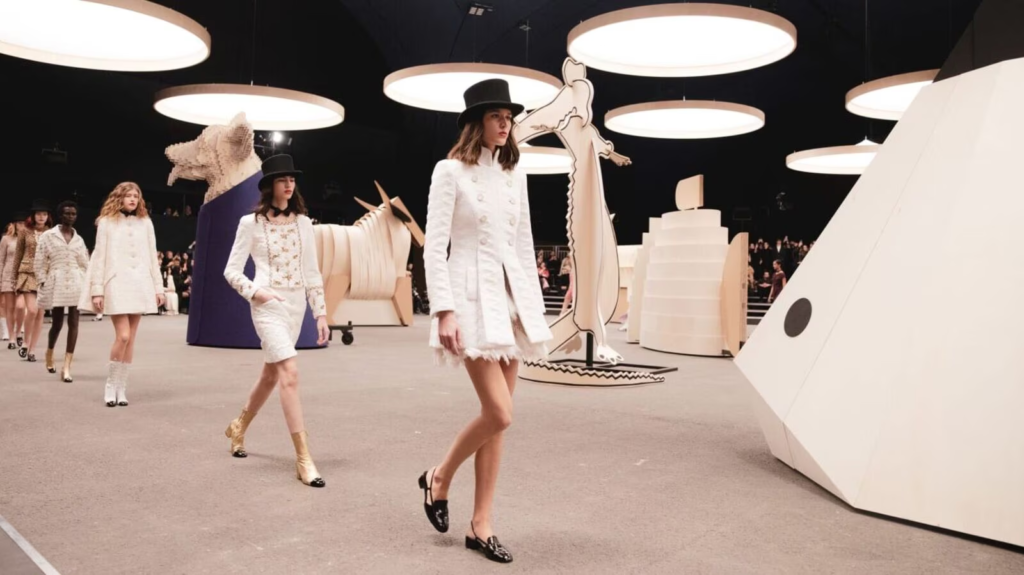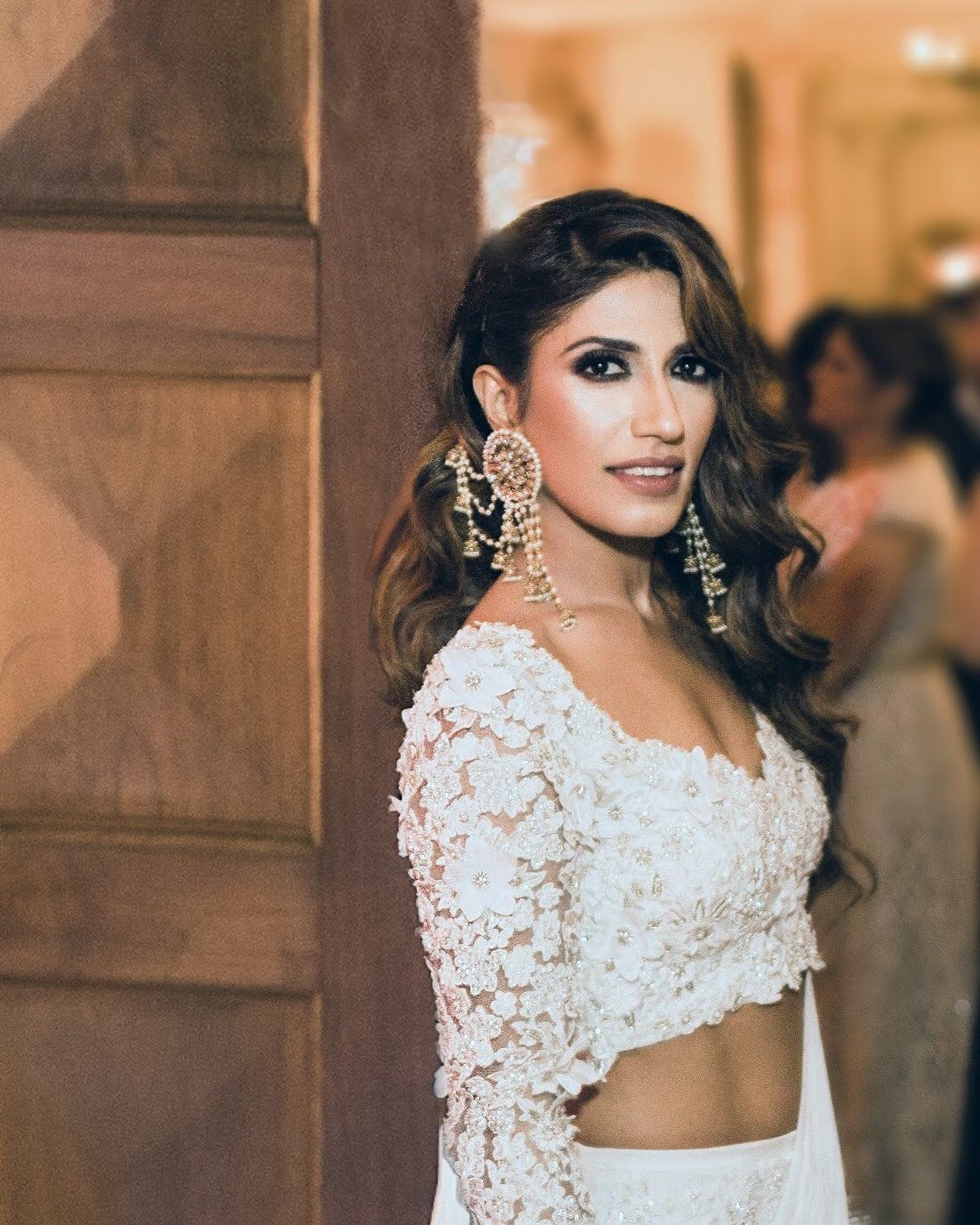In the world of high fashion, few names are as respected and admired as Chanel. Starting as a small hat shop in the early 1900s, Chanel has grown into a global fashion icon. Let’s explore the fascinating history, famous designs, and lasting impact of this legendary brand.

| Attribute | Details |
| Company type | Private |
| Industry | Fashion |
| Founded | 1910; 114 years ago |
| Paris, France | |
| Founders | Coco Chanel and Pierre Wertheimer |
| Headquarters | 5 Barlow Place, London, W1J 6DG, United Kingdom |
| 51.51054°N 0.1432786°W | |
| Number of locations | 500+ boutiques |
| Area served | Worldwide |
| Key people | Leena Nair (CEO) |
| Virginie Viard (Creative Director) | |
| Philippe Blondiaux (CFO) | |
| Olivier Polge (Master Perfumer) |
The Visionary: Gabrielle “Coco” Chanel
The story of Chanel is inextricably linked to the life and vision of its founder, Gabrielle “Coco” Chanel. Born in 1883 in Saumur, France, Chanel’s early years were marked by hardship and adversity. However, these challenges only fueled her determination and creativity, shaping the revolutionary spirit that would forever change the fashion landscape.
In 1909, Chanel opened her first millinery shop in Paris, a modest endeavor that would lay the foundation for her future empire. It was here that she began to challenge the sartorial conventions of the time, introducing a fresh, modern aesthetic that celebrated comfort and functionality over rigid corseting and excessive ornamentation.
The Chanel Suit: A Fashion Revolution
Perhaps Chanel’s most iconic and enduring creation is the Chanel Suit. Introduced in the 1920s, this revolutionary ensemble consisted of a knee-length skirt and a cardigan-style jacket, crafted from luxurious tweed and adorned with intricate details like gold-toned buttons and leather trimmings. The Chanel Suit embodied the brand’s commitment to simplicity, elegance, and practicality, offering women a newfound sense of freedom and empowerment.
The suit’s understated sophistication quickly captured the hearts and imaginations of fashion enthusiasts worldwide, and it remains a timeless staple in the wardrobes of stylish women to this day. Chanel’s innovative use of traditionally masculine fabrics and colors, such as grey and navy blue, further cemented her status as a trailblazer in the fashion world.
Beyond the Suit: Chanel’s Iconic Creations
While the Chanel Suit is undoubtedly the brand’s most recognizable offering, the House of Chanel has given birth to countless other iconic creations that have stood the test of time. The iconic Chanel No. 5 perfume, launched in 1921, is a prime example of Chanel’s ability to transcend trends and capture the essence of timeless luxury.
Developed by the esteemed perfumer Ernest Beaux, Chanel No. 5 was a groundbreaking fragrance that eschewed the traditional floral scents of the era in favor of a bold, complex blend of jasmine, rose, and aldehydes. Its distinct, intoxicating aroma quickly became a symbol of sophistication and elegance, cementing its status as one of the most coveted and recognizable perfumes in the world.
Another iconic Chanel creation is the quilted leather handbag, first introduced in 1955. Inspired by the quilted lining of a jacket worn by stable boys, this handbag embodied Chanel’s ability to find beauty and inspiration in unexpected places. With its distinctive diamond-quilted pattern and interlocking “CC” clasp, the Chanel handbag has become a coveted accessory, transcending generations and serving as a symbol of luxury and status.
The Post-Coco Era: Keeping the Legacy Alive
After Coco Chanel’s death in 1971, the House of Chanel faced the daunting task of preserving her legacy while adapting to the ever-changing tides of fashion. It was in 1983 that Karl Lagerfeld, a visionary designer in his own right, assumed the role of Chanel’s chief designer, ushering in a new era for the brand.
Lagerfeld’s tenure at Chanel was marked by a delicate balance between honoring the brand’s rich heritage and infusing it with modern sensibilities. He masterfully reinterpreted Chanel’s iconic codes, such as the tweed suit and the pearls, while introducing bold new silhouettes and daring color combinations that kept the brand relevant and coveted by a new generation of fashion enthusiasts.
Under Lagerfeld’s guidance, Chanel expanded its offerings beyond haute couture and ready-to-wear, venturing into the realms of fine jewelry, watches, and cosmetics. Each new collection paid homage to Chanel’s enduring legacy while simultaneously pushing the boundaries of creativity and innovation.
The Legacy Continues: Virginie Viard and the Future of Chanel
In 2019, the fashion world mourned the loss of Karl Lagerfeld, but Chanel’s legacy remained steadfast under the guidance of Virginie Viard, who seamlessly assumed the role of Creative Director. Viard, a longtime collaborator of Lagerfeld, has continued to honor the brand’s rich heritage while infusing it with her own unique perspective and vision.
One of Viard’s most significant contributions has been her commitment to sustainability and ethical practices within the fashion industry. In 2018, Chanel announced its decision to ban the use of fur and exotic skins in its collections, a bold move that solidified the brand’s commitment to responsible luxury.
Looking ahead, Chanel remains at the forefront of innovation and creativity, constantly exploring new materials, techniques, and design philosophies that push the boundaries of fashion. From its pioneering use of eco-conscious materials to its embrace of cutting-edge technologies, the House of Chanel continues to redefine what it means to be a luxury fashion brand in the 21st century.
The Timeless Appeal of Chanel
Beyond its iconic creations and groundbreaking designs, Chanel’s enduring allure lies in its ability to capture the essence of timeless elegance and sophistication. The brand’s unwavering commitment to quality, craftsmanship, and attention to detail has ensured that each Chanel creation is a work of art, a testament to the brand’s rich heritage and the visionary spirit of its founder.
From the streets of Paris to the red carpets of Hollywood, Chanel has become a universal symbol of style, grace, and empowerment. Its influence transcends fashion, permeating the realms of art, culture, and popular culture, solidifying its status as a true cultural icon.
As we look to the future, the House of Chanel continues to inspire and captivate, reminding us that true luxury is not merely a product, but a way of life, a celebration of beauty, creativity, and the unwavering pursuit of excellence. With its rich legacy and unwavering commitment to innovation, Chanel remains a beacon of style and sophistication, a timeless classic that will continue to shape the fashion world for generations to come.
Marketing Strategy of Chanel
Renowned Company
Chanel stands as a trendsetter in the fashion industry, celebrated for its revolutionary designs and enduring modernity. For over 100 years, Chanel has successfully upheld its legacy and heritage, maintaining a prestigious position in the market since its inception.
Extensive SKU and Robust Brand Portfolio
Chanel boasts a vast array of stock-keeping units (SKUs) and numerous sub-brands within each product category, encompassing fragrances, watches, and accessories. This extensive portfolio allows Chanel to cater to diverse consumer preferences and reinforce its market presence.
Promotion through Sponsorship of Popular Fashion Shows
Chanel effectively promotes its brand by sponsoring high-profile fashion events, including exhibitions and fashion shows such as Paris Fashion Week. These sponsorships enhance Chanel’s visibility and reinforce its status as a leading fashion house.
BCG Matrix – Marketing Strategy of Chanel
Chanel’s product portfolio includes fragrances, watches, skincare, and makeup accessories. In the BCG matrix, the fragrance and watch categories are classified as “Stars,” reflecting their high market share and growth potential. Conversely, due to the competitive nature of the fashion accessories segment, these products are categorized as “Question Marks.”
Distribution Strategy – Marketing Strategy of Chanel
Chanel employs a multi-channel distribution strategy to ensure global availability of its products. This includes exclusive stores, e-commerce platforms, multi-brand stores, and high-end supermarkets. Chanel’s exclusive showrooms, known as Chanel Boutiques, total over 300 worldwide, providing a premium shopping experience.
Brand Equity – Marketing Strategy of Chanel
Chanel’s high visibility, particularly through its fashion accessories, has significantly bolstered its brand equity. As of May 2016, Chanel was valued at $7.2 billion, with sales reaching $5.2 billion according to Forbes. It ranked 80th on Forbes’ list of the world’s most valuable brands, underscoring its strong market position and enduring appeal.
Conclusion
Chanel started as a small hat shop and grew into a global fashion powerhouse thanks to its founder, Gabrielle “Coco” Chanel. Her groundbreaking designs, like the Chanel Suit and Chanel No. 5 perfume, have become timeless symbols of elegance, simplicity, and women’s empowerment.
Chanel’s influence goes beyond its products, representing a spirit of ongoing innovation and adaptation. When Karl Lagerfeld took over, he modernized Chanel’s classic style, keeping it relevant for new generations. Now, under Virginie Viard, Chanel focuses on sustainability and ethical practices, staying true to its commitment to responsible luxury.














